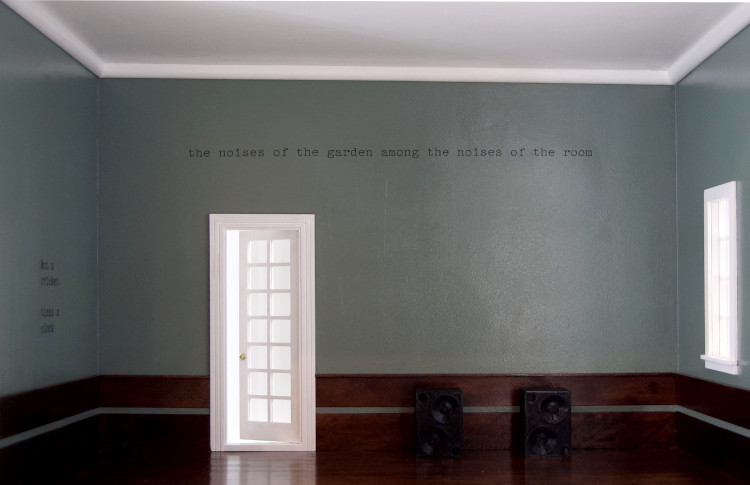.png)
.png)
|
P.M.
🕸
|
oleksandersssssssskeeper@gmail.com

Aram Saroyan
October
Curated by Elaine Levy
|
|
In his 1954 manifesto, "From Line to Constellation," Swiss poet, Eugen Gomringer reminds the reader that texts serve not only as written communication, but as images. He describes how poetry as an image imprints itself onto the reader’s mind.
If printing a prose is as curating a painting in a frame, then printing a poetry is like siting a sculpture in a landscape. Nicola Fucigna writes that "architecture and poetry share a paradoxical sense of "room." A poem has both space and boundary: room within a room. Similarly, a building achieves a perception beyond its limits." [2] Fucigna formulates her understanding of poetry beginning with the method of loci—Latin for “places”—citing the myth of Simonides of Ceos wherein a banquet hall, destroyed by the gods, is reconstructed by memory from verse. She constellates the Greek myth with etymological interpretations. In Chinese character for “poem” (?) as “word” (?)+ “temple” (?), and in Italian: the dual meaning of “stanza” as both a group of lines in a poem and a room.In the early and mid-1960s, Aram Saroyan became known for his increasingly short poems. He published a single word poem—”lighght”—in 1965, and later in the same year a four-legged version of the letter “m.” Richard Hell wrote in 2008, “Saroyan was writing poems meant to be looked at as much as read. His poems aimed to be things as well as words, and they used all the resources of the alphanumeric page (or slab of stone, as Ian Hamilton Finlay did, or poster or other medium) rather than being merely linguistic expression of pre-existing ideas or perceptions.” [3] By scaling poetry to its smallest possible elements coupled with its affinity to architecture—the final flying buttress of the m’s fourth leg—, Saroyan produces brief and intimate linguistic situations. Saroyan’s performance of his poetry brings to mind works by his contemporaries: John Giorno’s Dial-A-Poem (1968)*, or James Lee Byars’ World Question Center (1969), each which compounds the intimacy of speech within the technological apparatus that carries it. This intimacy with personal technology does not go unacknowledged by Saroyan. Instead of leveraging the apparatus directly, he works backwards from objects themselves—crickets and clocks. As, Paul Stephens writes, in his extensive MIT Press Reader review, Saroyan’s "not a cricket," plays with a sonic and semantic paralipsis:
Saroyan’s dication of the poem is slow, as if it were announced over the radio, and "ticks a / clock" shares a phonemic likeness to "six o’clock," while “ticks a” and “cricket” come together as an imperfect rhyme. [4] By the end of the 20th century the sound of crickets came to represent quietude in literature, theatre and film. "Crickets" has since become a shorthand for complete silence—the occupants of an empty space.
NOTES [1] Gomringer, E. (2001). From Line to Constellation. Retrieved 2020, from https://www.ubu.com/papers/gomringer01.html [2] Fucigna, N. (2017). Poetry an Architecture. Retrieved 2020, from http://constructionlitmag.com/featured-posts/poetry-and-architecture/ [3] Hell, R. (2008, April 27). Lighght Verse. Retrieved 2020, from https://www.nytimes.com/2008/04/27/books/review/Hell-t.html [4] Stephens, P. (2020, September 08). Aram Saroyan and the Art of the One-Word Poem. Retrieved 2020, from https://thereader.mitpress.mit.edu/art-of-one-word-poem/ Works on display: Aram Saroyan, “not a / cricket / ticks a / clock” in Pages, (New York: Random House, 1969), 19 Aram Saroyan, “the noises of the garden among the noises of the room” in Pages, (New York: Random House, 1969), 24 Aram Saroyan, “crickets” after the poem written in 1965, recorded on October 30, 2020, for Oleksandrsssssss
|
| R E T U R N |